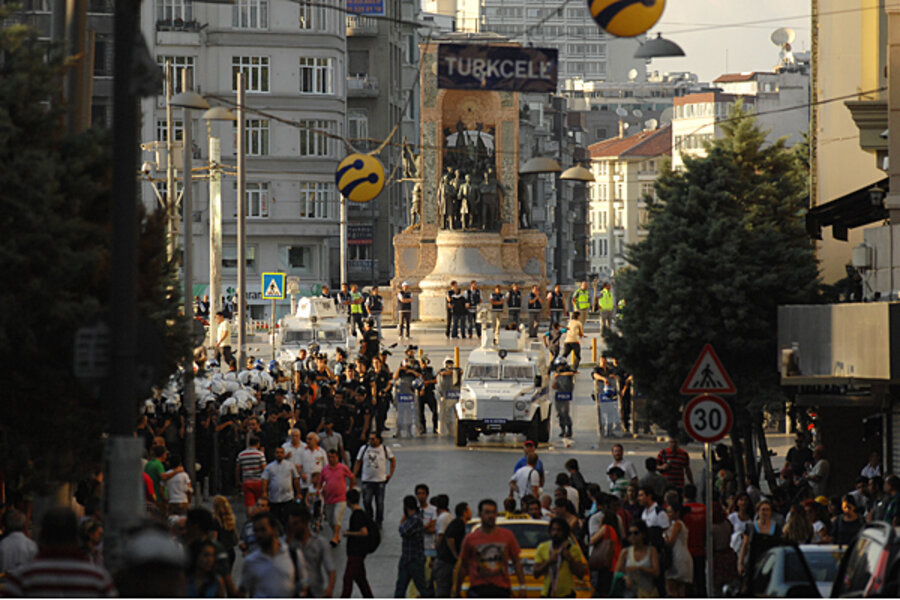Turks still protesting as international media moves on
Loading...
| Istanbul
Clashes between Turkish riot police and anti-government protestors have burned on for more than a month, leaving the heart of Istanbul choked in clouds of tear gas and wet from the spray of water cannons.
Protests started over a small sit-in to preserve the trees of Gezi Park, adjacent to Taksim Square, from a development project, but scenes of heavy-handed police efforts to break up that demonstration sparked public fury. Crowds grew to tens of thousands and swiftly broadened into anger about Prime Minister Recep Tayyip Erdogan’s abrasive style and what they see as the exclusionary attitude of his Islam-rooted Justice and Development Party.
The street clashes forced police to leave Taksim Square on June 1, only finally recapturing the square 10 days later on June 11 – and forcing thousands from a tent city that had sprung up in Gezi Park on June 15. The raids triggered night-long street battles.
Under police guard, Istanbul officials have now given Gezi Park a new makeover, with fresh turf, new flowers and more trees. This week they began to reopen it to the public.
Yet clashes continue, with both sides appearing to feel the need to show force. Mr. Erdogan has made clear he does not accept the charge of “dictator” chanted by protestors; and those who don hardhats and goggles say their “message” – despite weeks of violence, and millions of dollars of damage – has not gotten through.
Some days are quiet in Taksim Square. On others – if a protest is planned – police deploy on all approach roads, including the main Istiklal shopping street. Sometimes they stop or march; other times their very presence attracts a negative reaction from passersby, and tension escalates into clashes.
For those photographing the protests, the most important signals come from the riot police themselves. If they are relaxed and resting with their shields, there is likely to be a little more calm. But if they don their helmets – and especially their gas masks – then you had better put on yours, too.








